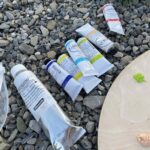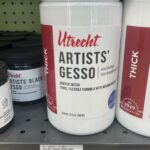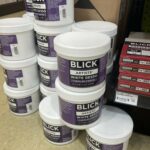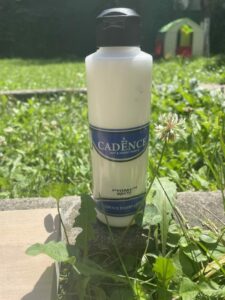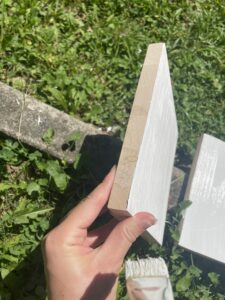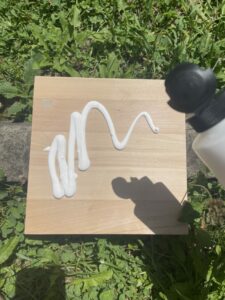A comprehensive guide: how to clean oil paint brushes
TLDR: To clean your oil paint brushes in a rush, grab a bar of soap and brush them back and forth on the soap under running water until the paint is all out.
I still sometimes use my mom’s paint brushes from her Bucharest, Romania pre-Revolution graduate fine arts program, and you can imagine how damaged they are. If I can keep these brushes from the ’70s clean, trust me: you can definitely keep yours beautifully cleaned and kept for decades to come, too.
Here’s a comprehensive guide to get you started.
Materials Needed
To clean your oil paint brushes, you need some materials.
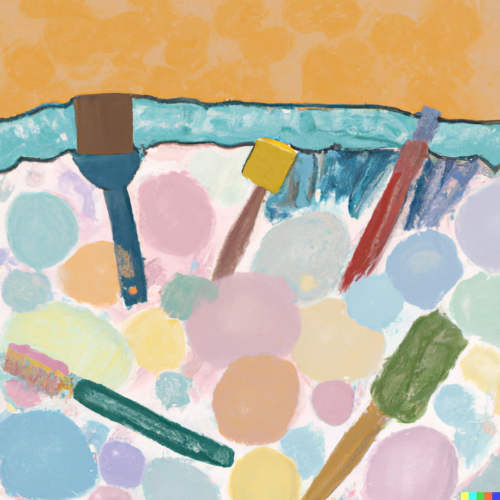
- Turpentine or mineral spirits
- A container (such as a glass jar or metal can)
- Soap, (mild dish soap, Murphy soap, brush cleaner soap, etc.
- Paper towels or rags
- A brush comb or wire brush
- Protective gloves (optional)
Step-by-step: how to clean oil paint brushes
Step 1: Prepare your workspace. Choose a well-ventilated area with good lighting. Lay down a protective covering, such as newspapers or a plastic sheet, to prevent any spills or stains on your work surface.
Step 2: Remove excess paint. Before cleaning your brushes, remove any excess paint by wiping them against the edge of your paint palette or a rag. Be gentle to avoid damaging the bristles.
Step 3: Initial cleaning with turpentine or mineral spirits. Pour a small amount of turpentine or mineral spirits into a container, enough to cover the bristles of your brush. Swirl the brush in the solvent, allowing it to loosen and dissolve the oil paint. Avoid excessively agitating the brush, as it can damage the bristles. Let the brush soak for a few minutes.
Step 4: Rinse the brush. After soaking, carefully remove the brush from the solvent and gently squeeze the bristles with a paper towel or rag to remove excess solvent and paint. Be cautious not to squeeze too hard, as it can misshape the bristles.
Step 5: Repeat cleaning. If there’s still significant paint residue, repeat steps 3 and 4 until the brush appears clean.
Step 6: Soap cleaning. Once you remove the bulk of the paint, wash the brush with mild dish soap or brush cleaner. Wet the brush under lukewarm water and apply a small amount of soap directly to the bristles. Gently massage the bristles to work the soap into the brush, removing any remaining paint. Rinse thoroughly with water.
Step 7: Shape the brush. While the brush is still wet, reshape the bristles using your fingers or a brush comb. Gently reshape the bristles to their original form to ensure proper drying and to maintain the brush’s shape.
Step 8: Dry the brush. Lay the brushes flat on a clean, absorbent surface, such as a paper towel or rag, to dry. Avoid placing them upright as water or solvent can accumulate in the ferrule (the metal part that holds the bristles) and damage the brush over time. Let them air dry completely before storing or using them again.
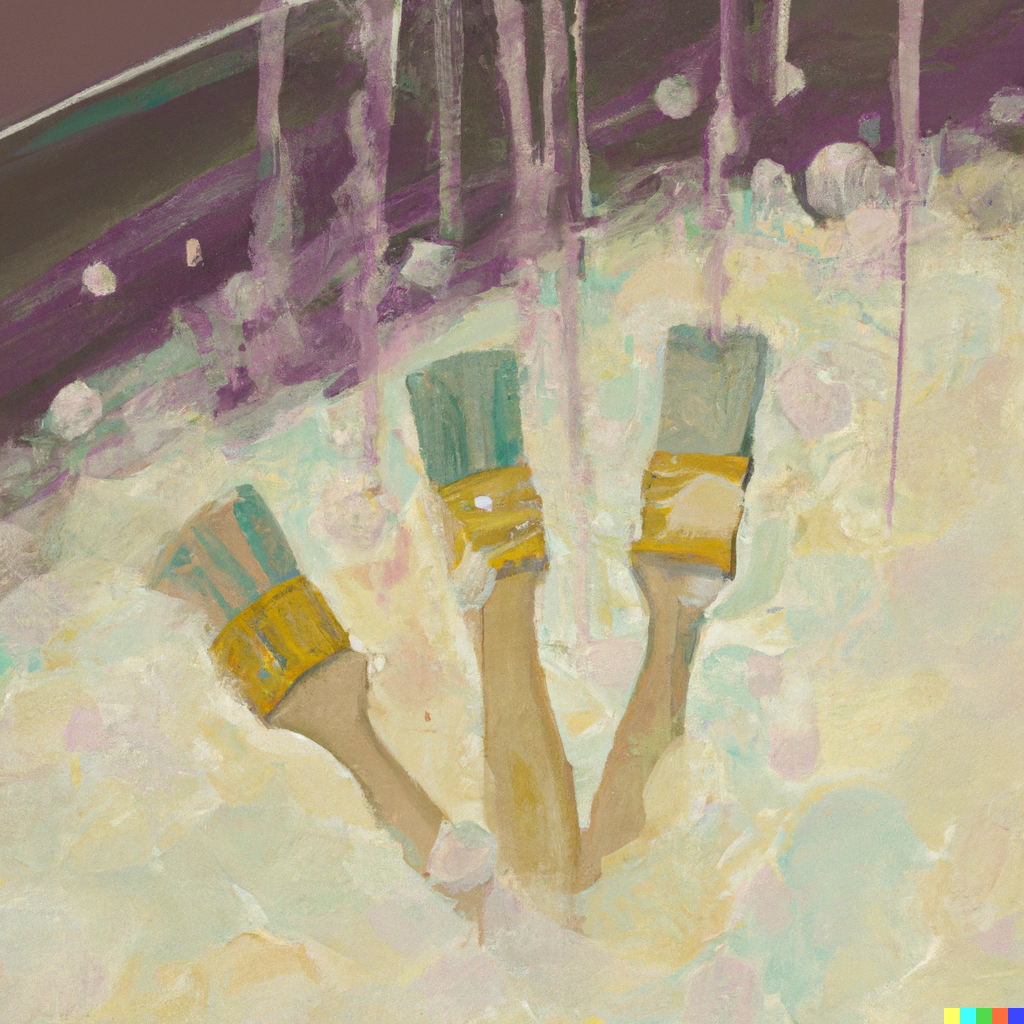
Extra Fancy Step: Conditioning the bristles. For stiff or frayed brushes, you can condition the bristles after cleaning. Use a small amount of brush conditioner and massage it into the bristles. If you don’t have brush conditioner, you can get hair conditioner. Leave it on for a few minutes, then rinse it out thoroughly with water. This can help restore the softness and flexibility of the bristles.
Frequently Asked Questions
Can you clean oil paint brushes with Dawn?
Yes! It won’t be as good as using mineral spirits, too; but using Dawn will get the job done. Use paper towels to rub the brushes around and get them really clean with the detergent. Any kind. of detergent will do, actually. You just need it to cut through oil.
How do you clean oil paint brushes without paint thinner?
See above. Remember, like dissolves like. So, use dish soap or any kind of soap bar if necessary.
Can I wash oil paint down the sink?
Ideally, no; you shouldn’t wash oil paint down the sink. Instead, scrape the oil paint off the brushes with paper towels and toss them in the trash. The best way to do this is to use some kind of oil-based cleaner (dish soap, soap bar) and scrape and squeeze as much of the paint off as possible. To get the final bits of oil paint off the brushes and get the brushes really clean, swirl them around some mineral spirits, wipe them down again on paper towels, and throw the paper towels away.
Staying Safe
Remember, when working with solvents like turpentine or mineral spirits, it’s essential to take proper safety precautions. Work in a well-ventilated area, and consider wearing protective gloves to avoid skin irritation. Additionally, dispose of any solvents properly according to local regulations.
By following these steps, you can effectively clean your oil paint brushes and maintain their longevity for future use.
Is turpentine or brush cleaner better for cleaning oil paintbrushes?
Both turpentine and brush cleaner can be used effectively to clean oil paint brushes, but they have some differences worth considering:
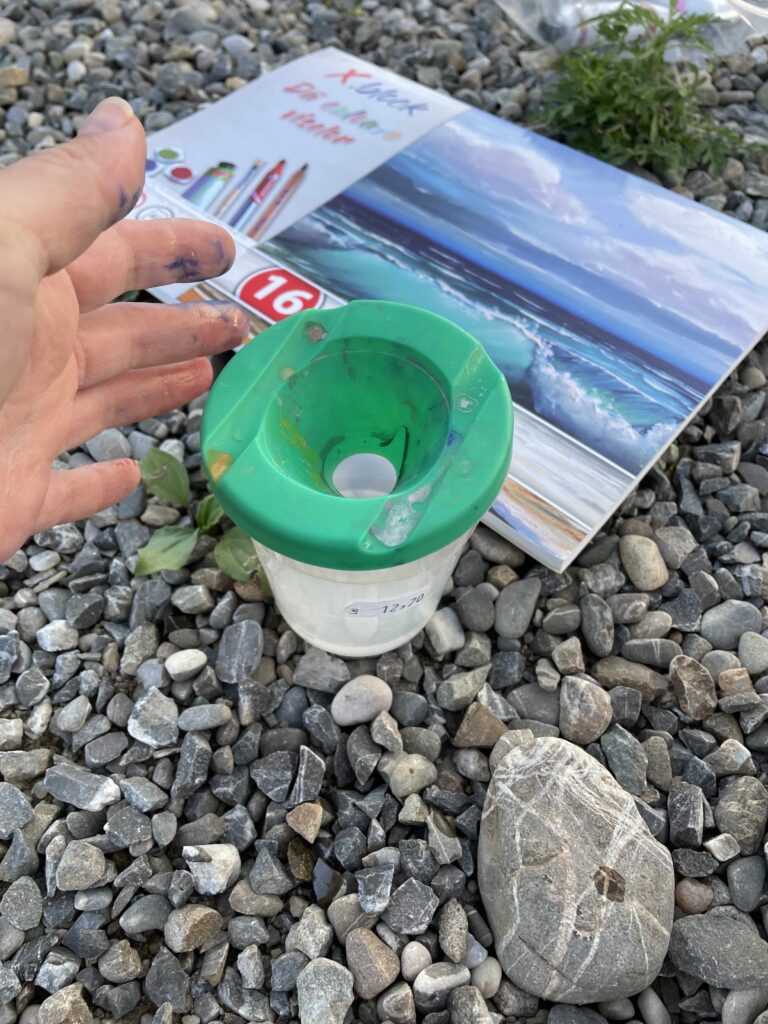
Cleaning Power
Turpentine is a traditional solvent that many artists use to clean their oil paint brushes. It has strong cleaning properties and can effectively dissolve and remove oil paint from brushes. Brush cleaners are specifically formulated for cleaning art brushes and often have similar cleaning power to turpentine.
Odor
Many people find the odor of turpentine unpleasant. It is distinct and very strong. You might prefer using a brush cleaner if you’re sensitive to strong odors. Brush cleaners are often formulated to have a milder scent or even be odorless.
Toxicity
Turpentine can be toxic if inhaled or ingested and cause skin irritation. It’s important to use turpentine in a well-ventilated area and consider wearing protective gloves. On the other hand, brush cleaners are less toxic and more user-friendly. Always check the label and follow the manufacturer’s safety instructions.
Environmental Impact
Turpentine is derived from natural sources and is biodegradable, but it is not considered environmentally friendly due to its toxic properties. Brush cleaners, especially those labeled as eco-friendly or water-based, tend to have a lower environmental impact.
Ultimately, the choice between turpentine and brush cleaner depends on personal preference and factors such as odor sensitivity, safety concerns, and environmental considerations. If you’re unsure, it’s a good idea to experiment with both options and see which works best for you.
Read more
